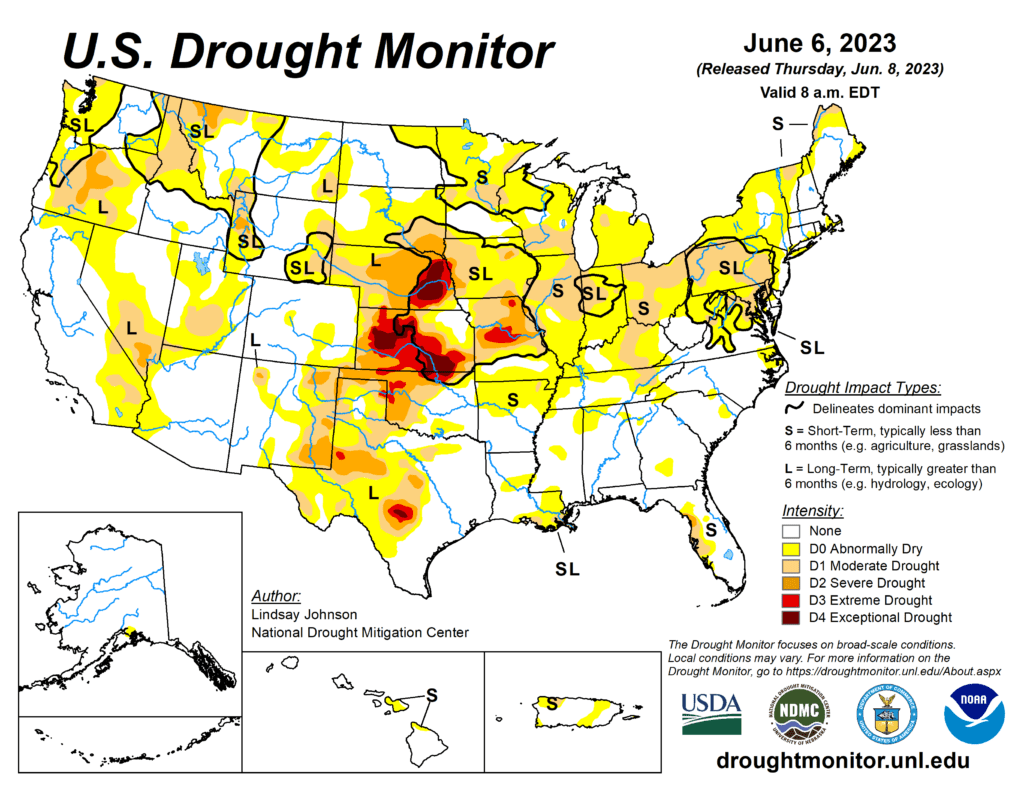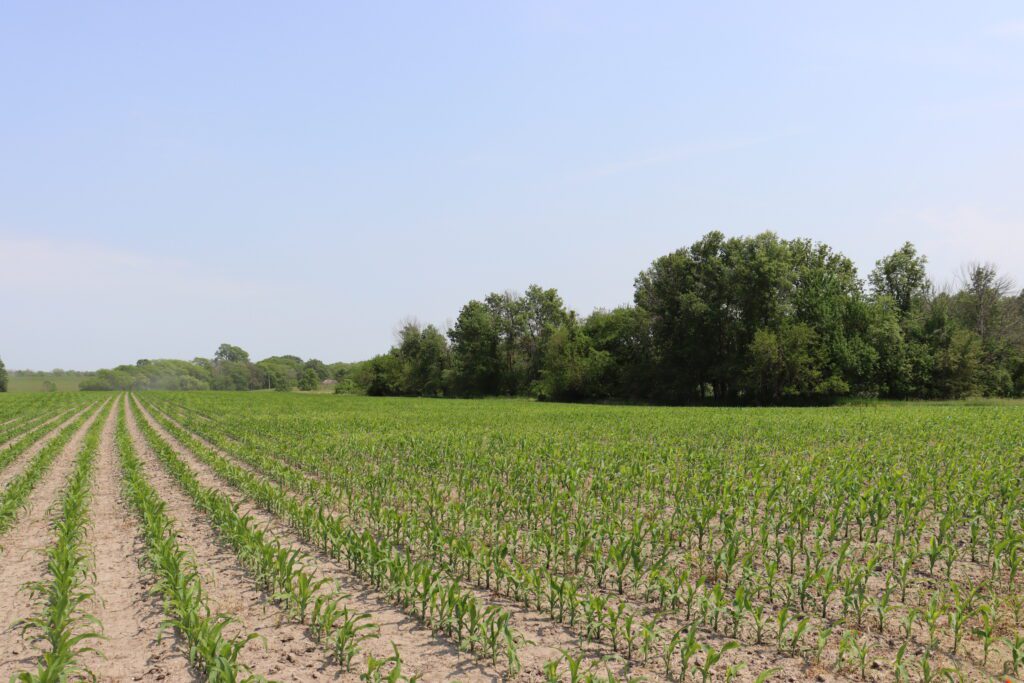By Cutting Edge Consulting, a team of agronomists contracted by AgVenture, Inc.
As we sit today, we are still in the first quarter of the game with this crop. In that first quarter, it is imperative to set yourself up for success. A team comes into a game prepared with information and a plan after carefully analyzing what they are up against. Even with a great plan, changes and adaptations have to be made with the mindset that even with curveballs or setbacks, success can still be achieved. Do NOT give up on this crop already…You would not be thrilled if your favorite NFL team was down two touchdowns and gave up in the first quarter. There is a great team assembled at AgVenture that can help you review your plan and adjust it when necessary. Once you have an idea of what crop conditions you are working with, lean on your team to help with key management decisions.
Across the Corn Belt, there are some places with a great crop coming that got relief from these spotty rain showers; however, there are still a lot of places stretching from Nebraska to Ohio that are in need of some moisture very soon. Then there are some areas just wrapping up planting and looking to get the crop out of the ground and growing quickly. No matter which scenario you fit into, EVERYONE needs to be out looking and evaluating their stands of corn and soybeans. You CANNOT follow or adapt a plan without knowing what you have established. Stand evaluation cannot be done from the truck driving by at 50 mph. It takes a careful and observant eye in the field, using tools to measure, dig, and analyze the stand QUANTITY (population) and QUALITY (prediction of full ears compared to planting population). AgVenture has a more than qualified group of individuals to help you evaluate stands.
This evaluation includes taking detailed population counts as well as determining out of those plants which will be full producing plants, versus partial producing plants or non-producing spaces. It is becoming evident who took the time and followed a plan that included seed placement and AgVenture planting standards. At AgVenture, our Maximum Profit System™ has proven that high planting standards, along with the highest seed quality, leads to the most uniform and vigorous stand of corn. Planting at 2 ¼” deep consistently across the field at 5 mph, or PREFERABLY less, into firm and fit conditions, sets up the high quality AgVenture seed you planted (high warm and cold germ scores, low abnormals) to thrive and emerge more uniform than anything else. Once the planter leaves the field, approximately 75% of yield potential has been imprinted on that crop…that is how delicate and important this process is. It REQUIRES the mindset of a 300 bpa corn grower to successfully start this crop off on the right foot.
In a lot of places, we’re at or approaching the growth stage where as much as 90% of yield potential will be imprinted, as a lot of fields are approaching V5, where the plant is starting to determine its rows around the ear. This is one key stage in the plant’s life that we want to reduce stress as much as possible, and certainly not go out and induce any further stress. Using stand evaluation, you can put a yield potential number to that stand of corn to help you determine which fields will be your highest performing farms, where the crop needs to be fed and given the extra attention to details to maximize yield and profit, and evaluation will also tell you where the struggling stands are and how to best approach the plan for those areas.
One way we can improve the R.O.I of this crop is to be efficient with any applications we make. Whether that is herbicides, fertilizer, fungicides, etc., we want to be purposeful with our products and timing. In areas where it is dry with no rain in the forecast, it may be best to hold off on nitrogen applications until we have rain in our forecast. We do NOT want urea and/or AMS sitting on the soil surface vulnerable to volatilization and loss. If it is dry in your area, be aware that side-dressing will open that soil up again, potentially drying out the profile even more AND not getting nearly enough of the nitrogen that you are applying at that time into the corn crop. If herbicide applications are needed, consider mixing in a fungicide with this pass as a great option to help reduce stress in the corn crop; however, on our racehorse and high yielding farms we do NOT want to skip the key fungicide application at R1. This double application could pay huge dividends in a season like we are having.
The thought of spending more money on a crop when the season may not have the start you are looking for may sound crazy; however, we take a different approach to looking at costs and evaluate the cost/bushel, not necessarily the cost/acre. Let’s consider a cost of $4.50/ac to apply a fungicide such as Azoxystrobin (Quadris® @ 5 oz/ac) on a pass already going out for weed control, and we find it brings an additional 5 bushel to the acre. That is a positive gain of $21.50/acre. To us, profitability is everything, and something that EACH ONE OF YOU needs to be aware of when considering various management tactics to push yields and alleviate stress.
Take a careful look and evaluate soybean stands for quality and quantity as well. Overall, we are seeing that soybeans are slow to emerge and are not elongating at the rate that they should this year. Interestingly, some soybeans at VC to V1 are already fixing nitrogen, which is not typical that early in their life cycle. The soybeans in some ways seem to be more mature than they look, which could make for an interesting growth pattern on this soybean crop. We are always looking for ways to push our soybean yields, and utilizing a plant growth regulator (PGR) with the post herbicide pass is one strategy we are planning to take a closer look at this year. Most of our “extras” on soybeans with fertility, fungicides, etc. will happen later in the season since most soybean yield is determined the last half of the growing season as opposed to corn where a lot of yield is determined early.
With all this being said, NOW is the time to get out and carefully look at your stands and start evaluating how the start of your plan went, and where to go from here.
Get ready, it’s going to be a wild ride!
If you have questions about your fields, contact your local AgVenture independent seed company.

